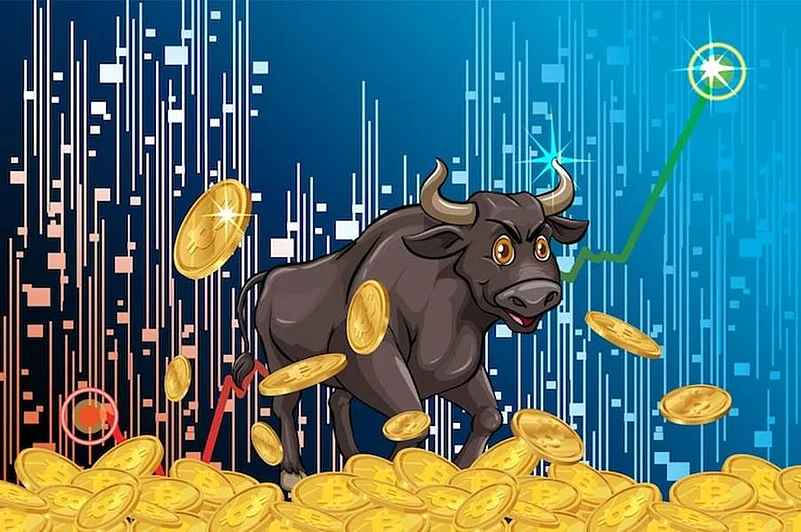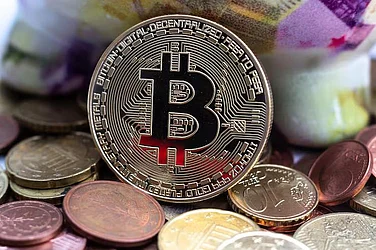In the fast-changing financial landscape of today, the boundaries between traditional finance (TradFi) and blockchain technology are slowly disappearing. The monetary system once based on centralized exchanges, banks, and tangible assets now dreams of starting a digital frontier that is decentralizing, open, and tokenizing. Two significant creations — Exchange-Traded Funds (ETFs) and tokenized assets — are becoming marvelous instruments in bridging the two.
The coming of crypto ETFs, such as Bitcoin and Ethereum ETFs, and the expanding adoption of tokenized real-world assets (RWAs) are a harbinger of change. They are introducing institutional investors to blockchain exposure via familiar vehicles while enabling blockchain ecosystems to access institutional capital. But will they actually close the gap — or are they another transition trial?
Let's break down the way tokenized assets and ETFs function, the benefits they have, the challenges they present, and whether or not they are able to bring the best of both worlds.
Know the Building Blocks: ETFs and Tokenized Assets
It is not until we have some idea of what each of them is that we can really talk about their bridging potential.
What is an ETF?
An Exchange-Traded Fund (ETF) is a fund that mirrors the performance of a supporting asset, sector, or index — like the S&P 500, gold, or even Bitcoin. It's listed on a stock exchange, enabling investors to leverage the liquidity of a stock as well as the diversification of a mutual fund.
Features of ETFs:
Listed and traded on regulated markets
Invest in portfolios of assets (stock, bonds, commodities, or cryptocurrency)
Provide transparency of holdings and performance
Provide retail and institutional investors with access to diversified markets
What Are Tokenized Assets?
Tokenized assets are physical assets — real estate, art, or bonds — tokenized digitally on a blockchain. A token is a percentage of ownership or economic claim in the asset.
Benefits of tokenized assets:
Permit fractional ownership (e.g., owning 0.001% of a property)
Increased 24/7 trading and settlement
Enhance transparency by means of verification on a blockchain
Minimize transaction costs and intermediaries
Taken collectively, tokenized assets and ETFs can exist as parallel pipelines from the traditional finance universe and the blockchain-based digital asset world moving toward a shared destiny.
The Bridge Between Blockchain and TradFi
Tokenized assets and ETFs are both designed to connect traditional markets with the decentralization of blockchain. Here's why:
Accessibility and Inclusion: Tokenization brings democratization of valuable assets for small investors. ETFs provide regulated exposure to crypto for risk-averse investors who do not want to keep digital assets in direct form.
Transparency and Trust: Blockchain provides unalterable records for transactions, and ETFs provide regulatory disclosure—together they provide a safe but transparent investment landscape.
Liquidity and Settlement Efficiency: Settlement in conventional markets is T+1 or T+2 days. Tokenized assets settle immediately, which enhances capital efficiency.
Tourist Capital: Conventional and crypto investors compromise in the middle — via regulated blockchain-backed ETFs or tokenized traditional funds.
Tech Compatibility: Smart contracts execute dividends, redemptions, and compliance work, streamlining asset dealing with.
Mechanism: How the Bridging Actually Happens
Integrating ETFs and tokenized assets is done by layering strategy bridging real-world assets to blockchain infrastructure.
Step-by-Step Process
Asset Identification – Identify which asset or index the token or ETF will be replicating.
Legal Structuring – Register the ETF or create a legal framework connecting the token to the asset.
Token Creation – Establish blockchain tokens that are representative of shares or ownership units.
Custody and Verification – Keep the underlying asset or ETF shares in safe custody with a custodian.
Blockchain Integration – Use smart contracts to enable trading, settlement, and dividend management.
Listing and Access – List tokens or ETF units on exchanges (legacy or crypto).
Continuous Compliance – Track financial regulations and reporting requirements.
Table: Traditional ETF vs Tokenized Asset
Feature | Traditional ETF | Tokenized Asset / Tokenized ETF |
Ownership Record | Maintained by central depository | Stored on blockchain ledger |
Trading Hours | Limited to exchange hours | 24/7 global trading possible |
Minimum Investment | Often higher due to share price | Fractional ownership available |
Settlement Time | T+1 or T+2 | Near-instant settlement |
Transparency | Periodic reports | Real-time visibility on blockchain |
Why This Bridge Matters Now
Over the last couple of years, institutional investors have become more interested in digital assets, especially after the endorsement of Bitcoin and Ethereum ETFs in key markets such as the U.S. and Hong Kong. Tokenization, however, has begun to unlock illiquid assets — ranging from private credit to art — and make them available to the international marketplace.
This bridging initiative is timely:
Rising demand for regulated exposure to crypto
Institutional adoption of blockchain products
Global digital asset regulation development
A maturing bridge between DeFi and TradFi
When blockchain encounters traditional finance, the result has the potential to transform market participation and redefine investor attitudes toward ownership, risk, and value.
Issues That Remain
Even with the promise, combining two fundamentally disparate systems is difficult. The bridge is not yet seamless.
Key Issues Are:
Regulatory Uncertainty: Tokenized assets are treated differently by various jurisdictions. Some consider them securities, while others consider them utility tokens, leading to ambiguity.
Custody Risks: Securely storing both traditional and digital assets continues to be a challenge.
Valuation Discrepancies: Maintaining a token price that reflects the true value of the underlying asset takes ongoing vigilance.
Technology Risks: A smart contract flaw or a failure in the blockchain can halt trading.
Liquidity Issues: Not all tokenized assets are sufficiently traded, resulting in inefficiency.
Educating Investors: Most retail investors are still not aware of blockchain-backed investment products.
The truth is that both markets — finance and blockchain — need to develop together for complete interoperability.
What Happens During a Bull Market?
During a bull market, investor sentiment tends to drive more inflows into conventional ETFs as well as tokenized assets. During this time:
Tokenized ETFs can see increased trading volumes as users search for quicker access.
Institutional investors can invest more money into crypto ETFs, driving mass adoption.
Tokenized real-world assets (RWAs) could command premium prices because of increased demand.
But the bull market conditions can also amplify threats — speculative activity, illiquid tokens, and artificially inflated valuations. Investors should not confuse genuine innovation with market mania.
Real-World Examples and Use Cases
Franklin Templeton's OnChain U.S. Government Money Fund – A pioneer in tokenized money market funds on blockchain, providing regulated access to traditional assets.
BlackRock and Invesco Bitcoin ETFs – Institutional validity for crypto exposure.
Copyright Tokenization Projects – Platforms such as RealT or Propchain enable investors to hold fractionalized property via blockchain tokens.
Bond Tokenization – Significant banks such as JPMorgan and HSBC are testing tokenized bonds to improve settlement efficiency.
All these examples illustrate how the bridge between new and old finance is gradually being built, with regulation, infrastructure, and technology as the pillars.
Conclusion
ETFs and tokenized assets are two sides of a revolutionary equation — one based on established regulation and structure, the other on digital innovation and decentralization. Together, they're remaking what it means to own, trade, and invest.
Whereas ETFs bring blockchain within reach for legacy investors, tokenization brings legacy assets into the blockchain space. Both are constructing parallel bridges to a singular financial ecosystem.
The complete fulfillment of this bridge will call for regulatory clarity, technological stability, and investor confidence. But the momentum is palpable. As markets move forward, ETFs and tokenized assets are not only bridging TradFi and blockchain — they are laying the groundwork for a new financial age where both camps exist, interact, and flourish together.




















![2025년 11월 온라인 카지노 사이트 모음, 바카라 사이트 순위 [추천15] 2025년 11월 온라인 카지노 사이트 모음, 바카라 사이트 순위 [추천15]](https://media.assettype.com/outlookindia/2025-10-30/4qp1losl/2025년-온라인-카지노-사이트-모음-바카라-사이트-순위-추천15?w=200&auto=format%2Ccompress&fit=max)




